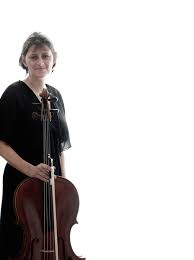Sunday 26 June 2016
At the end of the concert Catherine Rimer admitted that the two works she had played were on her bucket list – and that she had been fearful of approaching them – not that we would have been aware of any trepidation from the playing or the emotional intensity she brought to Bach and Britten.
She opened with the fifth of Bach’s six suites for solo cello. This is probably the least performed of the set though there is little reason for this given the magnificence of the writing throughout. She was playing on a baroque instrument of c1750 which was both tuned down, compared with standard orchestral tuning today, and has a flattened top string. Both of these made the work darker and warmer to the modern ear.
This warmth was very obvious in the opening Prelude which fed over into the grace and easy phrasing of the Allemande. If the Courante was slightly more extrovert, we returned to introspection with the mournful not to say melancholic strains of the Sarrabande. The two Gavottes had a lightness and gently fluidity which led into the Gigue which, if not totally joyful, is certainly moving in that direction.
The second work proved far more challenging. Britten wrote the three cello sonatas for Rostropovich and they are technically demanding as well as asking a lot of the audience. After a brief but complex snatch of melody which is not fully developed we move into a whimsical Fugue, which seems to model itself on Bach, before a long keening Lament which has real lyricism and overt emotion. The song melody returns again briefly before an edgy pizzicato Serenade and a strident March. Both of these prove more demanding than the opening movements but more is to come for the Bourdon is dense and serious, requiring the soloist to create unconventional tones before we return to a Moto perpetuo which flows into a final brief recapitulation of the song. It is not an easy work, and for many this would be their first hearing. It may have been better to have played the pieces the other way round.
None of these concerns should however reflect on the quality of Catherine Rimer’s performance of either works, which was moving and often very beautiful. This was not her first visit to St Nicholas and let us very much hope it will not be the last.

